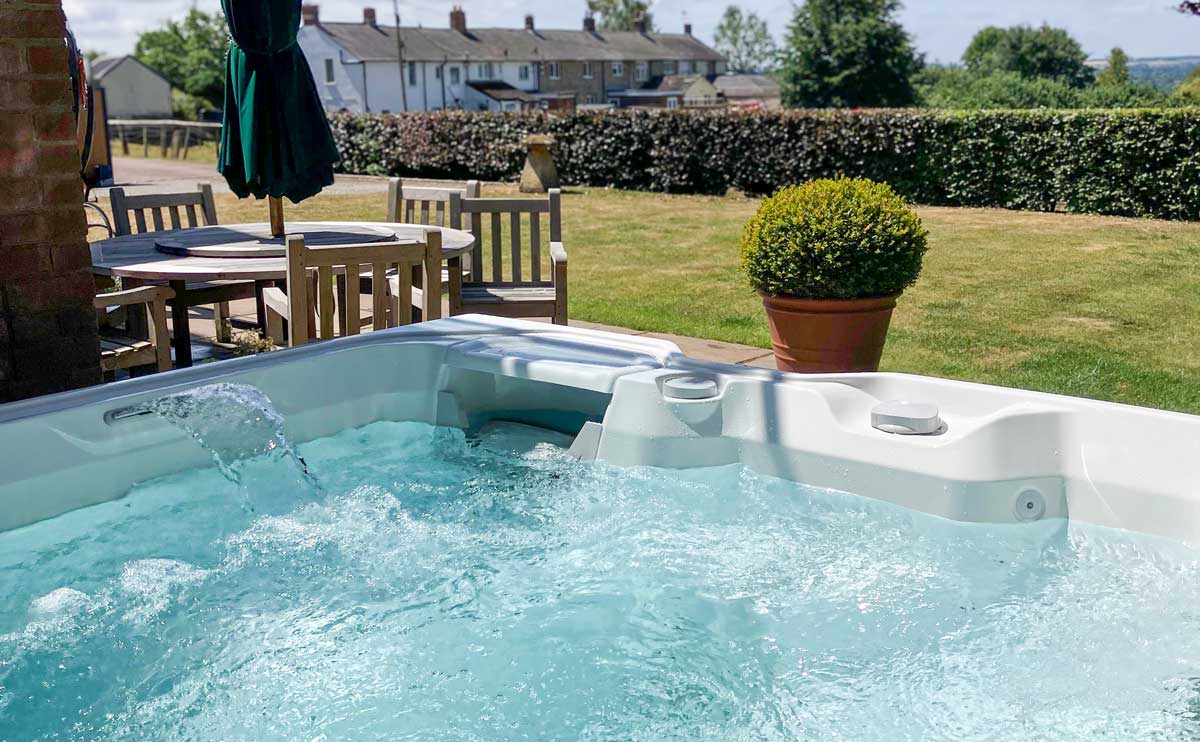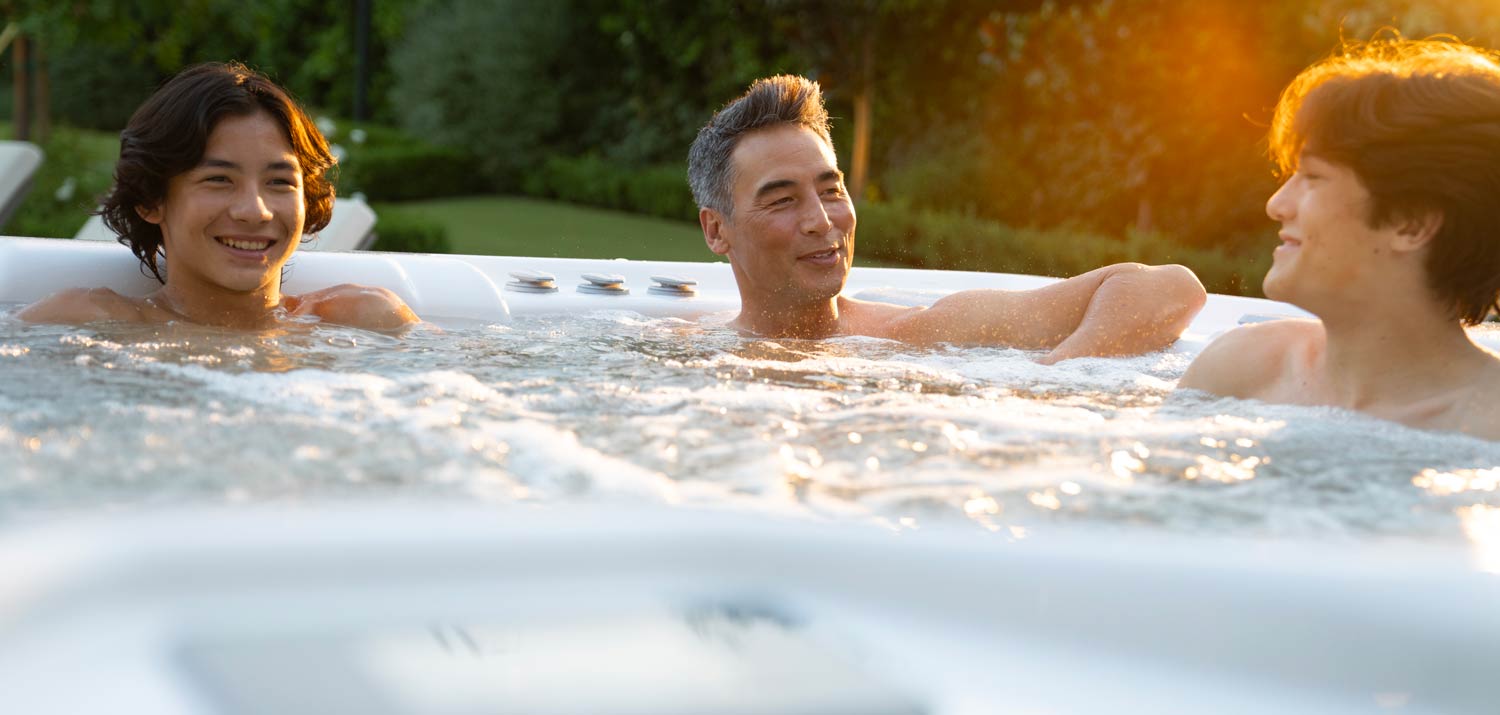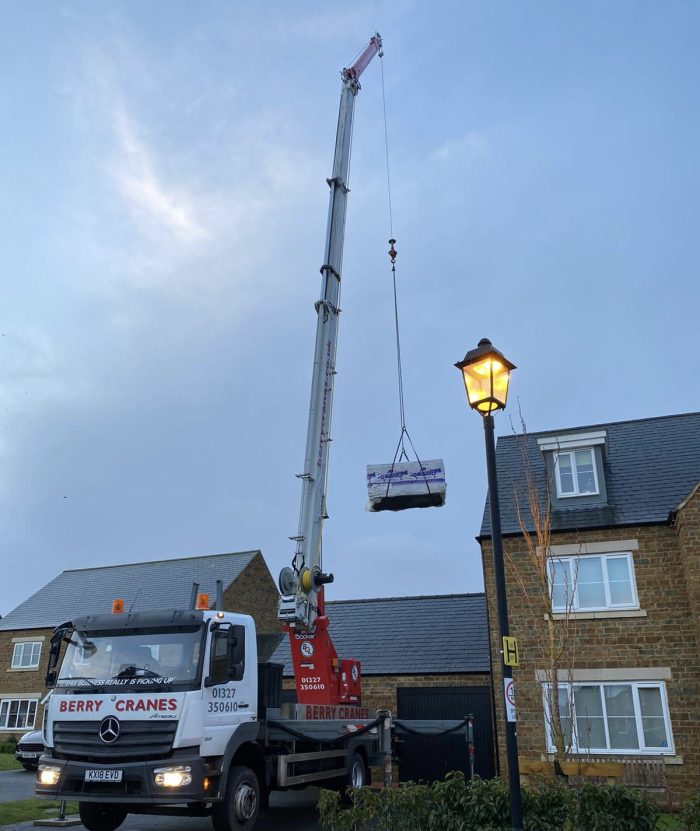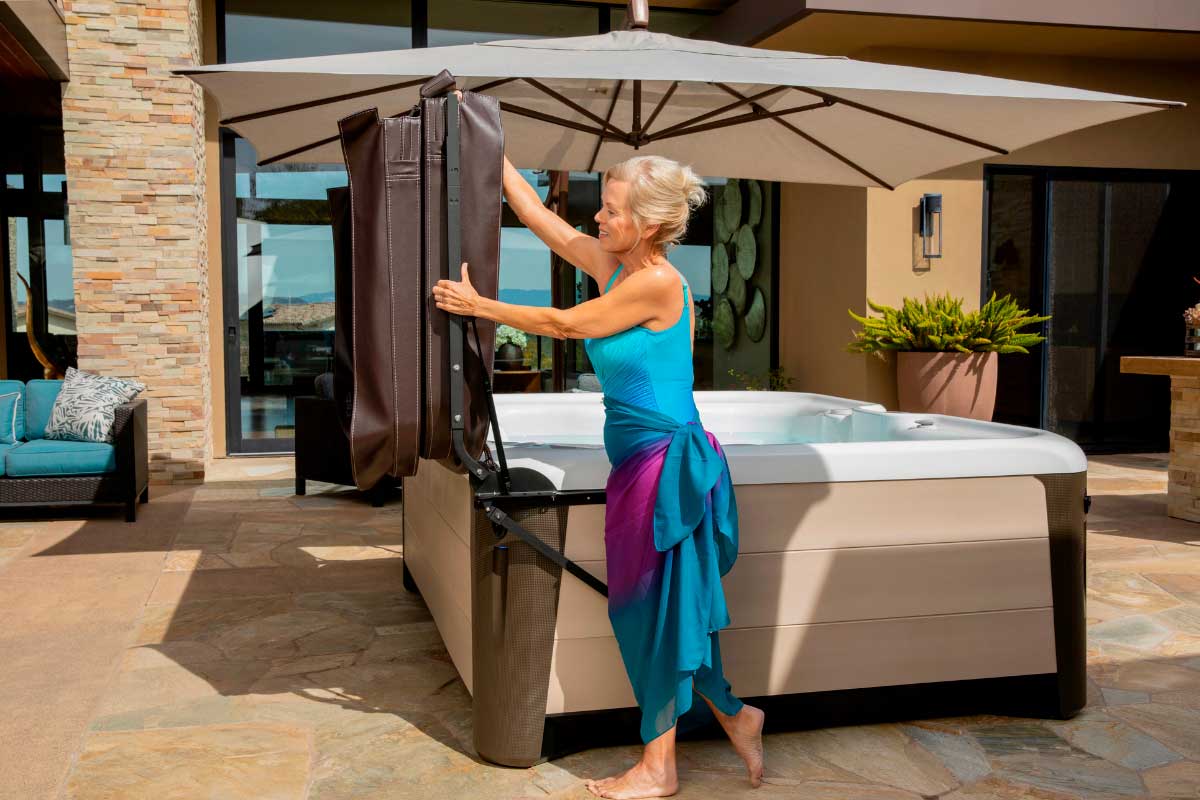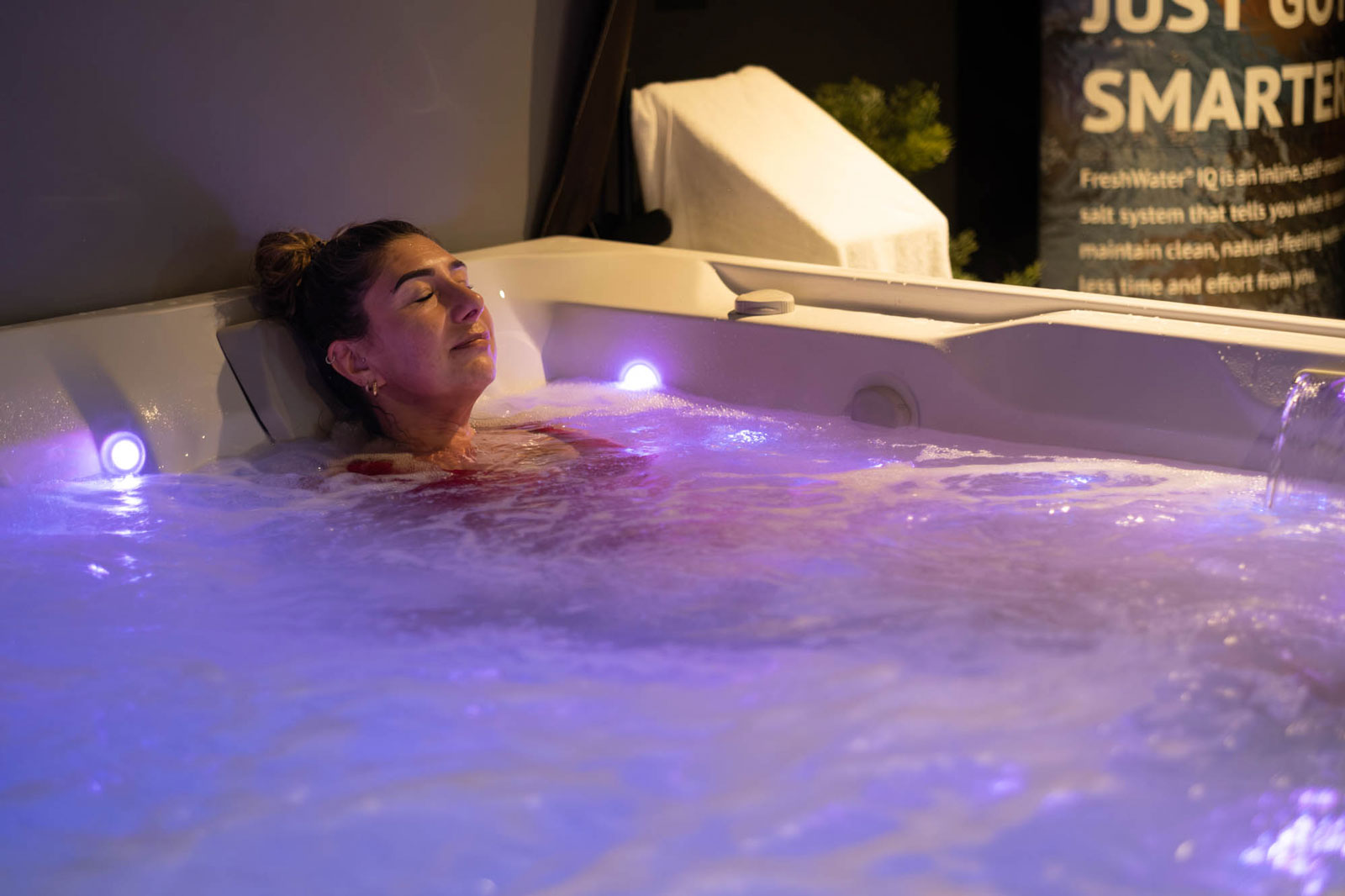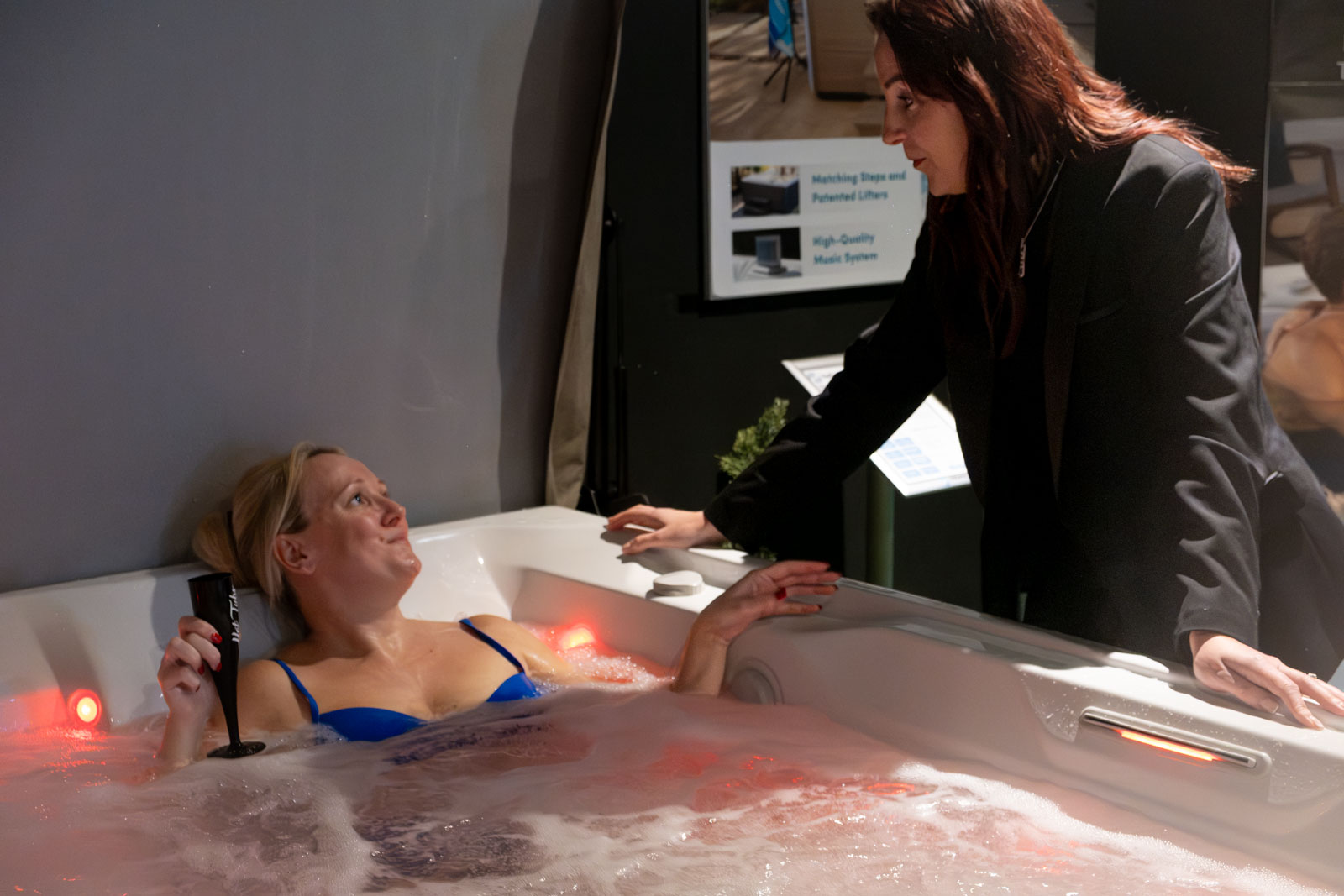Owning a hot tub brings luxury and relaxation, but it also comes with the responsibility of proper maintenance. To maximise your investment and ensure a safe and enjoyable experience, this guide covers every aspect of hot tub maintenance. With insights from our expert technicians and engineers, common problem-solving tips, and references to alternative suppliers, this guide is your go-to resource.
Understanding Water Chemistry
Why Water Chemistry is Crucial:
Balanced water chemistry is the foundation of a healthy hot tub. It not only protects your skin but also extends the life of your hot tub components.
- pH Levels: The pH level should be between 7.2 and 7.8. If the pH is too low, the water becomes acidic, which can corrode parts and irritate your skin. If it’s too high, the water becomes basic, leading to scale formation and cloudy water. Regular testing with pH strips or digital testers is essential.
- Alkalinity: Alkalinity serves as a buffer for pH levels. Maintaining total alkalinity between 80-120 ppm helps prevent drastic pH changes. Low alkalinity can cause pH to fluctuate, while high alkalinity can make it difficult to adjust pH.
- Sanitisers: Chlorine and bromine are the mostcommonsanitisers. They kill bacteria and keep the water clean. Chlorine works quickly and is effective but can be harsh on skin and eyes. Bromine is gentler and maintains its effectiveness over a broader pH range but requires a higher initial investment. Some hot tub owners opt for alternative sanitisers like mineral systems or saltwater, which can reduce chemical usage and offer a softer bathing experience.
- Calcium Hardness: This measures the level of calcium in your water, which should be between 150-400 ppm. Low calcium can lead to foaming and etching of surfaces, while high calcium can cause scaling on the tub’s components.
Routine Cleaning and Maintenance
Filter Maintenance:
Filters trap debris and contaminants, keeping your water clean. Clean your filters every 1-2 weeks using a hose or specialised filter cleaner. Deep clean them every month by soaking them in a filter-cleaning solution overnight. Replace filters every 12-24 months, depending on usage and manufacturer recommendations.

An Expert Tip from our Hot Tub EngineerBarry Nutt
"One of the simplest but most crucial tasks in hot tub maintenance is cleaning the filters. A dirty filter can put a strain on your system, making the pump work harder and potentially leading to bigger issues down the line. I always recommend a quick rinse every couple of weeks and a deep clean monthly. It’s a small effort that goes a long way in keeping your tub in top shape."
Dealing with Hard Water:
In regions with hard water, mineral build-up can be a significant issue. Using a pre-filter when filling your tub can help reduce the amount of calcium and magnesium in the water. Regularly treat the water with a descaling agent to prevent scale build-up on the heating element and other components.
Surface Cleaning:
The interior surfaces of your hot tub can accumulate grime, oils, and biofilm over time. Use a non-abrasive cleaner specifically designed for hot tubs. Clean the surface at least once a week, paying close attention to the waterline where build-up tends to occur.
Draining and Refilling:
Over time, dissolved solids accumulate in the water, making it harder to balance the chemistry. Draining and refilling the tub every 3-4 months refreshes the water and resets the chemistry. Before draining, clean the pipes using a line flush product to remove any biofilm build-up inside the plumbing.
Cover Maintenance:
A high-qualityhot tub cover is essential for retaining heat and protecting your hot tub from debris. Clean your cover regularly with mild soap and water, and treat it with a UV protectant to prevent cracking and fading. Inspect the cover for rips or waterlogging, as these can reduce its effectiveness.
Seasonal Care: Adapting to Weather Changes
Winter Care:
During winter, maintaining your hot tub becomes even more crucial. Insulate the pipes to prevent freezing, which can cause significant damage. Use a thermal cover to retain heat and consider a floating thermal blanket for extra insulation. If you’re closing your hot tub for the winter, thoroughly drain all water and consider using antifreeze in the plumbing.
An Expert Tip from our Hot Tub TechnicianRoss Owen
"As the colder months approach, winterizing your hot tub is essential to avoid freeze damage. I can't stress enough the importance of draining the water completely if you plan to shut it down for winter. Use antifreeze in the pipes and insulate wherever possible. Even if you keep it running, invest in a good-quality thermal cover—this will save you from costly repairs in the spring."
Summer Maintenance:
Hot tubs in summer face different challenges. High temperatures can cause sanitizer levels to drop rapidly, leading to bacteria growth. Monitor chlorine or bromine levels more frequently and consider using a chlorine stabiliser to protect it from UV degradation. Additionally, high temperatures can lead to algae growth, so keep the water clean and balanced.
Common Hot Tub Problems and Solutions
Even with meticulous care, hot tubs can encounter issues. Here are some common problems and how to solve them:
Cloudy Water:
Cloudy water can be caused by improper filtration, unbalanced water chemistry, or high levels of dissolved solids. Ensure your pH, alkalinity, and sanitizer levels are correct. Clean or replace the filter and consider using a clarifier to help remove small particles.
Watch our handyone-minute tutorial
Foamy Water:
Foaming is often caused by the buildup of soaps, lotions, or other contaminants. To resolve this, shock the water with a high dose of sanitizer, use a foam reducer, and consider draining and refilling the tub if the problem persists.
Watch our handyone-minute tutorial
Green Water:
Green water is most common in pools because of algae but with a hot tub is most commonly caused by a lack of sanitizer, high pH, high cyanuric acid level or a combination of those things.
Watch our handyone-minute tutorial
Hot Tub Not Heating:
If your hot tub isn’t reaching the desired temperature, check the thermostat settings and ensure the heater is functioning correctly. A malfunctioning heater or pump can prevent proper water circulation and heating. If the issue persists, consult a professional to check the heating element and sensors.
Low Water Pressure:
Low pressure from the jets can indicate a blockage in the plumbing or a problem with the pump. Check for obstructions in the filter and plumbing lines. If the pump is making unusual noises, it may need repair or replacement.
Error Codes:
Modern hot tubs often come with digital displays that show error codes when something is wrong. Refer to your hot tub’s manual for specific error code meanings and troubleshooting steps.
Unusual Noises:
Loud or unusual noises can signal issues with the pump, motor, or blower. Regular inspection and maintenance of these components are crucial. If you notice persistent noises, it might be time to call in a professional to avoid further damage.
When to Call for Professional Servicing
The Role of Professional Maintenance:
While regular maintenance can prevent many issues, some tasks require professional expertise. An annual service by a qualified technician ensures that all components are functioning correctly and can catch minor issues before they become major problems. During a professional service, expect thorough cleaning, inspection of the electrical components, water balancing, and a detailed assessment of the hot tub’s structural integrity.
Local Servicing Options in Oxfordshire:
For those who prefer professional assistance,Hot Tubs Oxfordshire offers tailored maintenance packages, ensuring your hot tub remains in top condition.
Other Local Options: Earlier this year we wrote an article in ourHTO Knowledge Base called‘Inclusive Insights: A Look at Hot Tub Choices in Oxfordshire’
The three retailers that came out strong on Service and Aftercare were:
Hot Tub Studio (Bicester, Oxfordshire)
- Service & Aftercare: Hot Tub Studio is renowned for its high level of service and comprehensive maintenance packages. They offer everything from routine cleaning and water testing to more in-depth services, ensuring your hot tub stays in peak condition. Their team provides personalised maintenance plans that cater to both new and long-term hot tub owners.
Arctic Spas Oxford (Kidlington, Oxfordshire)
- Service & Aftercare: Arctic Spas Oxford offers specialised maintenance services, particularly suited for hot tubs in colder climates. Their expertise in cold-climate maintenance ensures that your hot tub can be enjoyed year-round, even in the harshest weather conditions. Their services include standard maintenance as well as bolt-on services tailored to specific needs.
Hot Tubs At Home (Towcester, Oxfordshire)
- Service & Aftercare: Hot Tubs At Home is a family-run business offering a range of hot tubs with a strong focus on comprehensive maintenance and aftercare. Their services include part-exchange, repairs, maintenance, and even relocation of hot tubs. They are known for their customer-centric approach, offering tailored maintenance packages to suit various needs.
Long-Term Care and Investment Protection
Protecting Your Investment:
Investing in a high-quality cover, keeping up with regular maintenance, and addressing issues promptly will extend the life of your hot tub. Consider adding a cover lifter for easy access and to protect the cover from damage. Regularly inspect the shell for cracks or leaks, and don’t hesitate to seek professional help for repairs.
Component Longevity:
To extend the life of critical components like the heater, jets, and pumps, regular inspection and cleaning are essential. Descale the heater periodically, ensure the jets are free of debris, and keep the pump clean and lubricated.
Energy Efficiency:
Improving your hot tub’s energy efficiency not only saves money but also reduces wear on components. Ensure your cover is in good condition, keep the water temperature consistent, and consider investing in a high-efficiency pump or heater.
Final Thoughts from Director Kenny Massey: The Good, The Bad, and The Ugly
Kenny Massey, our Director, brings a wealth of experience from his early days as a Hot Tub Technician, where his technical skills and customer rapport quickly stood out. His journey from technician to director has provided him with a deep understanding of both the joys and pitfalls of hot tub ownership.
A well-maintained hot tub can be a source of relaxation and enjoyment for 20 years or more, but this longevity depends on both the quality of the hot tub and the diligence of its care. When purchasing, it’s essential to select from reputableHot Tub Suppliers who offer high-quality models and reliable aftercare services. Cheaper models, often made with lower-quality materials, may offer short-term savings but can become long-term headaches, especially if not properly maintained.
Neglecting maintenance, particularly the regular addition of necessary chemicals, can turn your hot tub into a breeding ground for bacteria, fungi, and algae. The water may turn green, cloudy, and become unsafe for use, transforming what should be a haven of relaxation into an unsightly and unusable eyesore. This scenario is the worst-case outcome that we work tirelessly to prevent.
Kenny's advice is clear: invest in a quality hot tub and commit to its maintenance. Doing so not only ensures the longevity of your investment but also keeps your hot tub a place of comfort and pleasure, rather than a source of frustration. The key to avoiding the ugly side of hot tub ownership is simple—don't cut corners on either the purchase or the upkeep.
